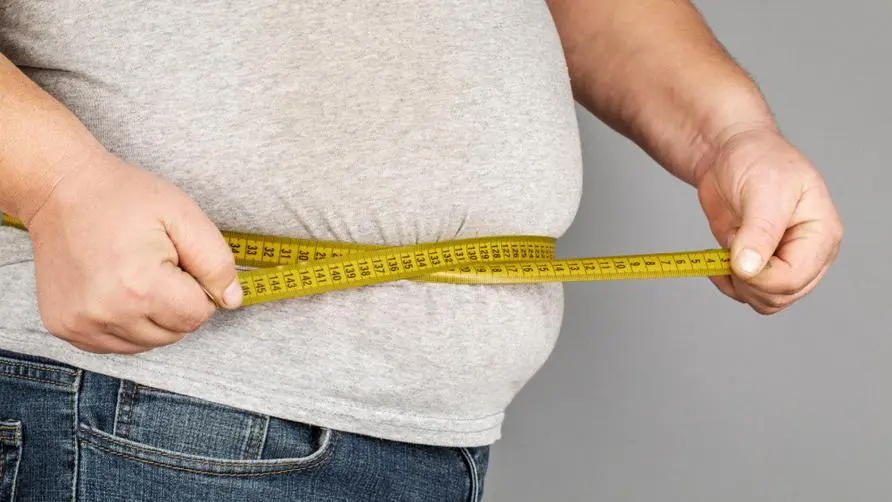The bigger the belly, the shorter the life expectancy? Critical care doctor warns: If the "waist circumference" becomes 5 centimeters thicker, the mortality rate increases by up to 9%

“An enlarged belly” may cause people to shorten their lives! Study reveals thicker waistline linked to increased mortality
Office workers and sedentary people should pay attention! If your “waist circumference” begins to grow uncontrollably, it may be related to a decrease in life expectancy. Dr. Huang Xuan, an expert in critical care medicine, pointed out in a social post that waist circumference is an important indicator of human obesity and visceral fat accumulation. In recent years, more and more studies have shown that there is a close relationship between waist circumference and life span.
Dr. Huang Xuan cited the literature in “HHS Public Access” as an example: Research has found that higher waist circumference is positively correlated with mortality, and people with larger waist circumferences tend to have shorter life spans. For every 5 cm increase in waist circumference for men, the mortality rate increased by 7%; for every 5 cm increase in waist circumference for women, the mortality rate increased by 9%.
Another study published in “The Archives of Internal Medicine” found that men with a waist circumference of more than 120cm have a 2.02 times higher risk of death than men with a waist circumference less than 90cm; women with a waist circumference of more than 110cm have a higher risk of death than women with a waist circumference less than 75cm. 2.36 times higher. Overall, people with high waist circumferences were likely to have a shorter life expectancy than those with normal waist circumferences.
Is increasing waist circumference more harmful than just gaining weight? Critical care medicine: prone to chronic diseases and metabolic diseases
Why is an increase in waist circumference associated with an increased risk of mortality? Dr. Huang Xuan explained that there are two reasons: First, an increase in waist circumference will cause the risk of chronic diseases, such as cardiovascular disease, diabetes, hypertension, hyperlipidemia, cancer and other diseases. The second is the increased risk of metabolic syndrome, including hypertension, hyperglycemia, hyperlipidemia, obesity and other factors.
According to the recommendations of the Taiwan Ministry of Health and Welfare, Health Promotion Administration, the ideal waist circumference range for adult men should be less than 90 cm, and for adult women, it should be less than 80 cm. If the waist circumference exceeds the above standards, it is classified as “abdominal obesity”, which will increase the risk of metabolic syndrome, cardiovascular disease and diabetes.
Dr. Huang Xuan emphasized that although the relationship between waist circumference and life span has been confirmed by many studies, some scholars still point out that there are limitations in relying solely on waist circumference as an indicator of health. For example, specific studies have found that other indicators such as body mass index (BMI) and body fat percentage are also important factors in judging human health status. Therefore, in order to more comprehensively assess an individual’s life expectancy, BMI and body fat percentage should also be taken into consideration.
Obesity can’t just be measured by weight numbers? Nutritionist: If one of the “4 values” exceeds the standard, it means obesity!
To sum up, in addition to waist circumference, knowing your own weight values is crucial to maintaining a healthy physical condition. Nutritionist Gao Minmin suggests that obesity requires more than just weight. It is recommended that the following four values be evaluated together. If one of them exceeds the standard, it meets the definition of obesity:
1. Body mass index (BMI): weight(kg) / height x height(meters) Adults over 18 years old are divided into 6 body positions, namely:
- Underweight (BMI<18.5)
- Normal (18.5≦BMI<24.0)
- Overweight (24.0≦BMI<27.0)
- Mild obesity (27.0≦BMI<30.0)
- Moderate obesity (30.0≦BMI<35.0)
- Severe obesity (BMI≥35.0)
2. Waist:
- Male ideal value, obesity value(cm): <90, ≥90
- Female ideal value, obesity value(cm): <80, ≥80
3. Body fat:
- 18-30 years old: 14%-20% for men, 17-24% for women
- 31-69 years old: 17%-23% of men, 20-27% of women
- Obesity: more than 25% of men and more than 30% of women
4. Waist-to-hip ratio: waist(cm) / hip(cm)
- Male ideal value, obesity value: <0.90, ≥0.95
- Female ideal value, obesity value: <0.80, ≥0.85
Source:
“Your Waist Circumference, Your Lifespan” - Dr. Huang Xuan
Waist circumference and all-cause mortality in a large US cohort
A Pooled Analysis of Waist Circumference and Mortality in 650,000 Adults
Further reading:





